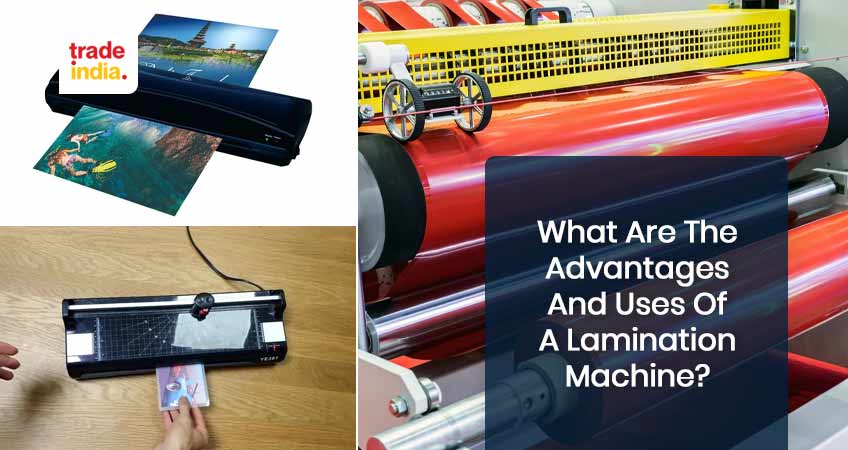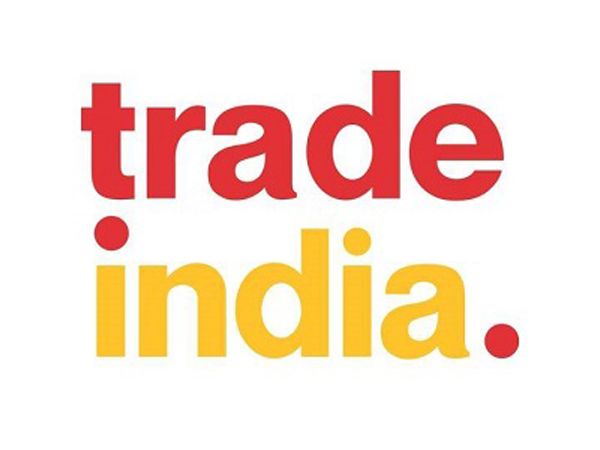What Are the Advantages and Uses of a Lamination Machine?

Introduction
A paper or other item can be laminated on both sides with the help of a laminating machine. The layer adds strength, durability, and lifespan to the material, and is typically a plastic film that has been attached to the substance using heat.
The lamination procedure is used to categorize laminating machines. Pressure-sensitive lamination, traditional thermal lamination, high-temperature lamination, Liquid lamination, and low-temperature lamination film are the five techniques available. Magnetized materials can be laminated with the help of specialized lamination machine that heat-set vinyl containing ferro-magnetic components, making the laminated poster attractive to magnets. Useful paperwork can be laminated with a machine at the office.
Top 5 Advantages of a Lamination Machine
1. Lamination Machine Helps Increase Revenues
Lamination machines can be utilized for practically any purpose since they are compatible with so many different substrates, post-print processes, and decorations. Lamination's uses are as varied as the products it protects, from folding cartons housing earphones to menus for prestigious restaurants to premium labels for wine bottles to health and beauty aids to nutraceuticals.
Incorporating lamination machines into their manufacturing process allows printers to reach out to interesting new markets and secure positions with brands that may have previously been out of reach. Small businesses can compete with the big boys by making eye-catching greeting cards, book covers, and business cards with a little ingenuity and organization.
Even markets that have only ever seen lamination machines as an afterthought to increase durability or stiffness in printed materials are starting to see their potential. Higher retail pricing can be achieved with laminated packaging because of the emotional connection it establishes with the target audience.
2. Lamination Machine Helps Reduce Expenses
Lamination machines may seem like an unnecessary expense, but they can bring value to a project in ways that help keep costs down.
Laminates are far more slender than the substrates to which they attach, yet their composition usually makes them more robust and long-lasting than paper or pulp. By using affordable lamination machine prices, printers are able to employ thinner paper without sacrificing the end product's heft in the hands of the customer.
In addition, the inherent durability of some burnish-resistant laminates means that slip sheets and shrink packaging are unnecessary for their shipment.
Lamination machine’s unsupported films can assist label converters to save money on raw materials compared to standard self-wound laminates in the premium label market. The machines have lower production and shipping costs than comparable self-wound options because there is no adhesive layer. Laminates are more cost-effective than UV coatings for any print process since they require less setup and no cleaning, allowing more products to reach the market and generate revenue.
3. Lamination Machines Add an Aesthetic Appeals
Competition among brands for retail real estate persists even in the era of online purchasing. Products' visual appeal is crucial because it's the first thing shoppers see when perusing the shelves. Obviously, graphic designs will have a major impact on the visual appeal of packaging, but laminates can improve the visual appeal of an item in ways that ink and coatings cannot.
Carton and other folded or bent packaging are protected from unsightly cracks on corners and curves thanks to laminates. By applying a gloss lamination, even regular paper will look more polished and professional.
To avoid having words and images becoming hidden by glare from bright lights, certain finishes, such as the aptly termed matte laminates, create a non-reflective matte effect.
There are countless ways in which laminates can boost the impact of a design. Soft-touch laminate's rich hap tic impact makes it stand out from other packaging solutions, especially in a market where customers increasingly value tactile experiences.
Also, Read - Top 10 Xerox Machine Brands In India
4. Lamination Machines Increase the Lifespan of Prints
Paper is notoriously delicate and easily scuffed, bent, or damaged, which is ironic given how much time and work graphic designers, printers, and manufacturers spend into projects that employ paper.
Lamination machine prevent grime and oil from penetrating to the underlying surface and some surfaces (such as those with a gloss finish) can even be disinfected with a damp cloth to stop the spread of bacteria and other unsavory substances.
Laminated paper's durability and ease of cleaning make it ideal for use in menus, brochures, and greeting cards, all of which tend to get handled quite a bit. In general, the strength and durability of laminated paper will increase with repeated usage, whether the laminate is made of polypropylene or polyester.
Considering the plastic nature of laminating films, they serve to keep the substrate from warping or dissolving in the presence of moisture. If you plan on using paper in your project more than once or for an extended period of time, you should probably laminate it.
5. Lamination Machine Protects Ink and Designs
Repeated handling increases the risk of ink smearing or rubbing off on any exposed areas. The best lamination machine serve as a barrier between the many hands that will be handling these objects and the delicate details they contain, ensuring that they will always look as good as the day they were made.
Lamination machine and similar coatings protect designs from wear and tear by making them impervious to scratches and scuffs. Lamination machine is one such option that prevents fingerprints and other marks from marring the surface.
Uses of Lamination Machines
1. The Office Use
The two most important considerations when shopping for a lamination machine for the office are the size you need and the frequency with which it will be used. There's a large selection of A3 and A4 models available, each with its own set of features and price tag, but the more costly ones almost always have one major advantage: faster processing speeds.
Top-tier lamination machine may cost more up front, but they can end up saving you money in the long run if you don't waste time waiting for laminating processes to begin or ramp up, or if you don't have to re-run the process as often due to misalignments and bubbling, as is the case with budget brands.
Rather than having to re-program the machine every time you wish to use it, many machines designed for more intensive daily use in the classroom or workplace has built-in memory capabilities.
2. Commercial/Heavy Duty Use
Again, the degree of adaptability needed and the level of use expected are the primary considerations when shopping for heavy-duty or industrial laminators. These machines can also be built to keep up with seemingly unending use, but this level of durability and performance does not come cheap.
If you need to laminate a lot of items every day, particularly at a high rate per hour, a high-end or laminator machine is your best bet because it is built to work faster and harder than its less powerful counterparts while still producing high-quality laminated materials.
To achieve your production goals, you'll need the right lamination pouches or films, and that in turn will dictate the quality of the machine you'll need.
3. Lamination Photos
One of the more popular intended uses for a3 laminating machine is laminating photographs, however many users are naturally wary of using them for this purpose.
Although laminating photographs is done to protect them for longer, there is always a degree of anxiety when the photos are irreplaceable. The most important thing to remember when laminating images is that, just like with any laminating machine, the better and more uniform the results, the less chances of bubbling, the higher the roller count.
Although two-roller lamination machines are the most affordable option, they are not always reliable, thus four-roller machines are preferable for important documents and six-roller machines or more are preferable for photos that are dear to the user's heart. The old adage "you get what you pay for" rings true with high-end photo laminating machines, as it does with many other things.
Conclusion
Finally, think about the type of finish you'll need depending on the intended use and context of the work. There are a variety of factors to think about and features to look for when shopping for laminating accessories, whether you're interested in a low-cost home laminator suitable for occasional use or a more robust model made for frequent usage in an office, school, or business.
FAQs: Lamination Machine
Q. Which lamination machine is better, hot or cold?
Ans: Users who want high-quality lamination without the inconvenience of heating elements often choose cold lamination machines over hot lamination machines.
Q. How do I select a laminating machine?
Ans: Here are the tips:
- Consider the document Size
- Number of Sheets
- Film Thickness
- Number of Users
- Cost of the machine
- Brand
Q. Can we use a lamination machine to laminate a4 paper?
Ans: Yes, Self-laminating sheets are useful for large projects, especially those that are A4 in size. We recommend selecting a self-adhesive sheet with a grid on the back, as this will facilitate paper repositioning.
Q. Can I use a lamination machine to laminate PVC cards?
Ans: Yes, laminating ID cards with a lamination machine is the process of applying a protective laminate coating to a PVC, composite, or synthetic paper ID card.
Related Blogs:
